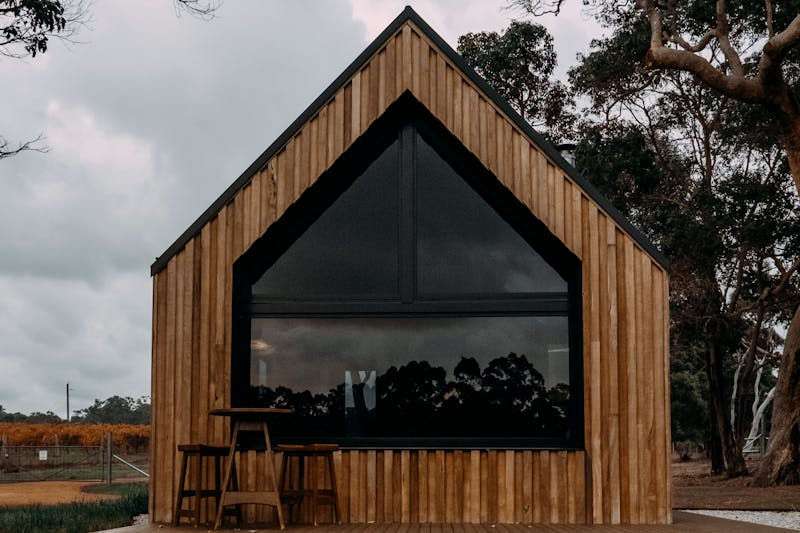Designing Stunning Landscaping in Compact Spaces: Expert Tips and Tricks
- Katie Moroney
- Dec 6, 2024
- 3 min read
Updated: Jun 14
Are you finding yourself gazing at a petite patio, a miniature rooftop, or a tiny terrace with dreams of turning it into a lush oasis? Does the thought of landscaping such a compact area feel overwhelming, sparking more questions than answers? If so, then you're in the right place. Join us as we delve into the engaging world of compact space landscaping and unveil valuable design secrets straight from the experts playbook.
Landscaping can transform the tiniest corner into a beautiful retreat, but it usually poses challenges due to the space's smaller nature. Can we, however, let these spatial restrictions limit our creativity? Absolutely not. With the right strategy, you can convert a compact area into a stunning, serene haven. This article will guide you through various concepts and practical tips to make the most out of every square foot.
While incorporating large-scale design ideas into a small space isn’t a walk in the park, it isn’t impossible either. So, let's dive in and discover the magic within compact spaces waiting to unfold.

Key Elements in Landscaping Small Areas
Understanding the critical elements of landscaping in small spaces is your first step. The focus should be on ensuring that all elements harmonize with one another without making the space look cluttered.
Scheme and proportion are two very crucial concepts when dealing with compact areas. Your plans should subtly contribute to a clear, intelligible layout that enhances the overall look and feel of the space.
Your garden design shouldn't overwhelm the remaining parts of your property. When elements are in the proper proportion, even the smallest garden can have a balanced, idyllic aesthetic.
Maximizing Space with Vertical Gardens
In the realm of compact space landscaping, vertical gardens are a game-changer. Not only is a vertical garden visually striking, but it also makes brilliant use of limited ground space.
Planting upwards can essentially provide you with a living wall of natural beauty. This method frees up valuable floor space and can even work as a privacy screen, making your tiny patio feel more secluded.
Your choice of plants should align with the overall theme and maintenance requirements of your mini garden. Varying sizes and shades of green provide an interesting visual contrast and keep your vertical garden from appearing monotonous.
Multi-functional Furniture
Furniture plays a monumental role in small-space landscaping, serving both a practical and aesthetic purpose. Multi-functionality is key here. Look for pieces that can play multiple roles.
A bench with under-seat storage, for instance, provides a perfect spot to stow away gardening tools or outdoor toys. A foldable table can serve as a lunch spot during the day and a candle-lit dinner space at night.
The rule of thumb is to optimize, not overcrowd. You want to keep the space usable and inviting, not stuffed to the brim.
Ideal Plants for Small Spaces
Choosing the right plants is crucial. Look for dwarf or compact variants that won't outgrow your small garden. Sculptural plants can provide an attractive focal point while trailing plants can soften hard edges.
Containers and pots bring flexibility and diversity and they can be easily moved or replaced. Do bear in mind, however, that plants in containers require more care as they are entirely reliant on you for their water and nutrients.

The Power of Colors in Landscaping
Colors can create illusions, and the clever use of color in landscaping can make your space appear larger. Light colors tend to recede, enhancing the perception of space. Use a vibrant, warm-toned plant or furniture piece as a focal point can draw the eye in and create a sense of depth.
In all, effective color management can make your mini landscape feel larger and more inviting and is definitely a trick worth incorporating.
Lighting – Painting with Shadows
Never underestimate the power of carefully planned lighting in your compact landscape. The right lighting can create a magical ambience, especially during the evening hours. Light up areas of interest, and use shadows to add dimension and depth to your small garden.
Conclusion
Designing in small spaces truly does not mean you must limit your creativity. It's about seeing the potential in the limitations, seizing those challenges, and using them to create something beautiful and uniquely yours. By considering key landscaping elements and cleverly employing tips like vertical gardening, multi-functional furniture, optimal plant choices, color effects, and strategic lighting, your compact outdoor space can indeed become a masterpiece.
Remember, you're not just designing a landscape; you're curating an experience, a haven in your home. So embrace the challenge, have fun, and let your tiny garden become the jewel in your home's crown.
.png)







Comments